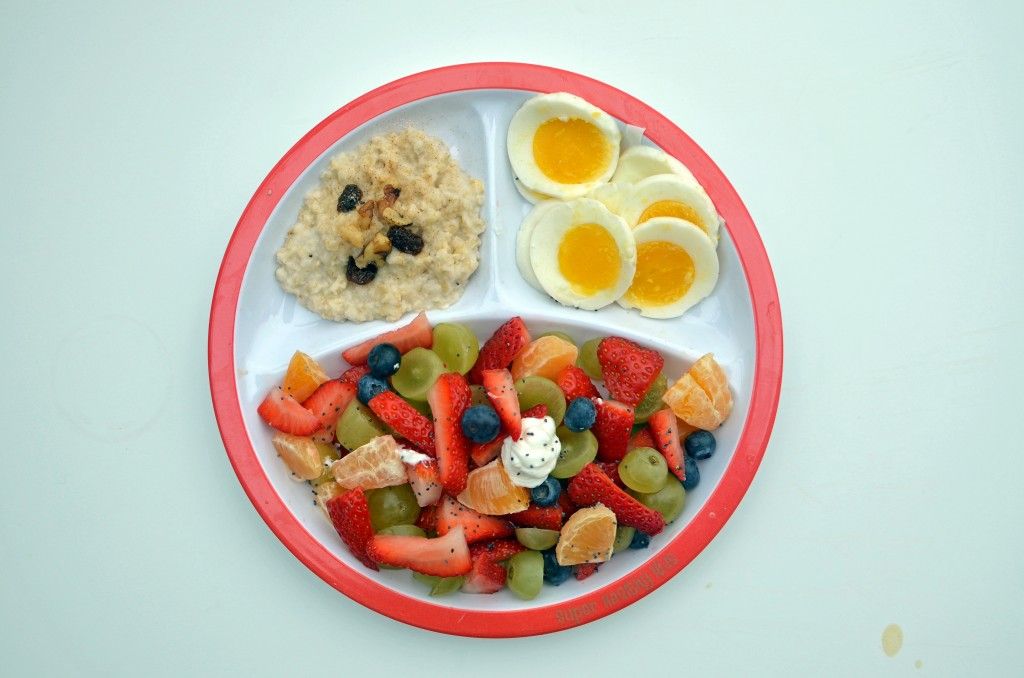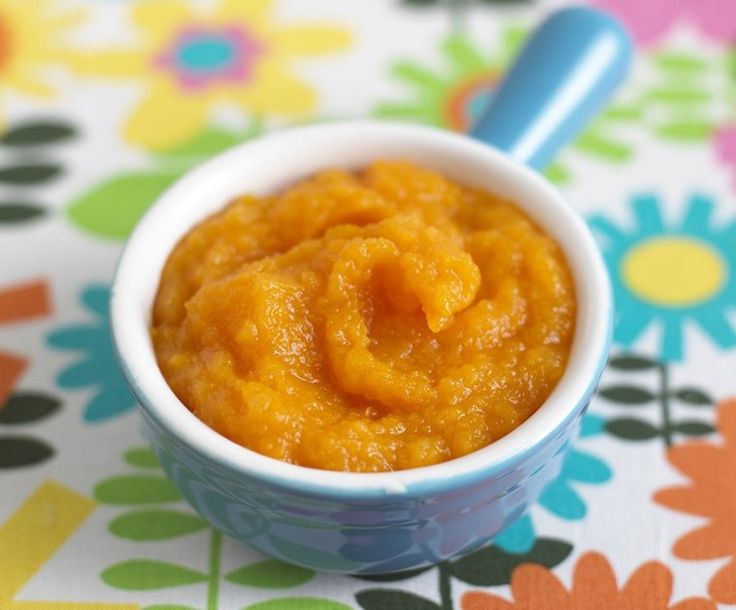How do mother birds feed their babies
How Do Mother Birds Feed Their Babies? Birds Advice Guide
Mother birds always love their babies unconditionally. They spend a lot of time to take care of their babies and keep them safe as much as possible. Also, they don’t discriminate to their babies in terms of feeding them.
Then there is a question among bird lovers. How do mother birds feed their babies? The answer is that most mother birds eat food and then regurgitate it for the babies. They often feed their babies insects so that they can get more protein and grow healthy.
And that’s why we will provide you some necessary information so that you will be able to know how mother birds feed their babies. This writing is also our loving dedication to our beautiful feathered friends.
How Do Mother Birds Feed Their Babies?Handy Hint: To read more about birds food, visit our other article about What To Feed A Baby Bird Without Feathers? [here..], What Birds Eat Black Oil Sunflower Seeds? [here] and How To Feed Wild Birds? [here.
.]
Baby birds always depend on their parents to eat food. In this case, a mother bird usually digests the food and then puts that food into the babies’ mouth. The babies always open their mouth wide and screech for the food when they are hungry.
However, the feeding method may be different, depending on the species. But every time the baby bird, which screeches louder, usually gets more food than others.
If the baby bird gapes its mouth strongly, then the parent can feed it easily, and the baby will be able to swallow much larger items.
How Do Mother Birds Ensure Which One Needs More Food?Sometimes each baby bird doesn’t get an equal amount of food. Perhaps it may be sick or is unable to show the parent that it needs food.
In most cases, the other siblings are bigger and stronger. They can shove their other nestmates to get the food.
You may find various species of birds that have a variety of behaviors and sibling competition.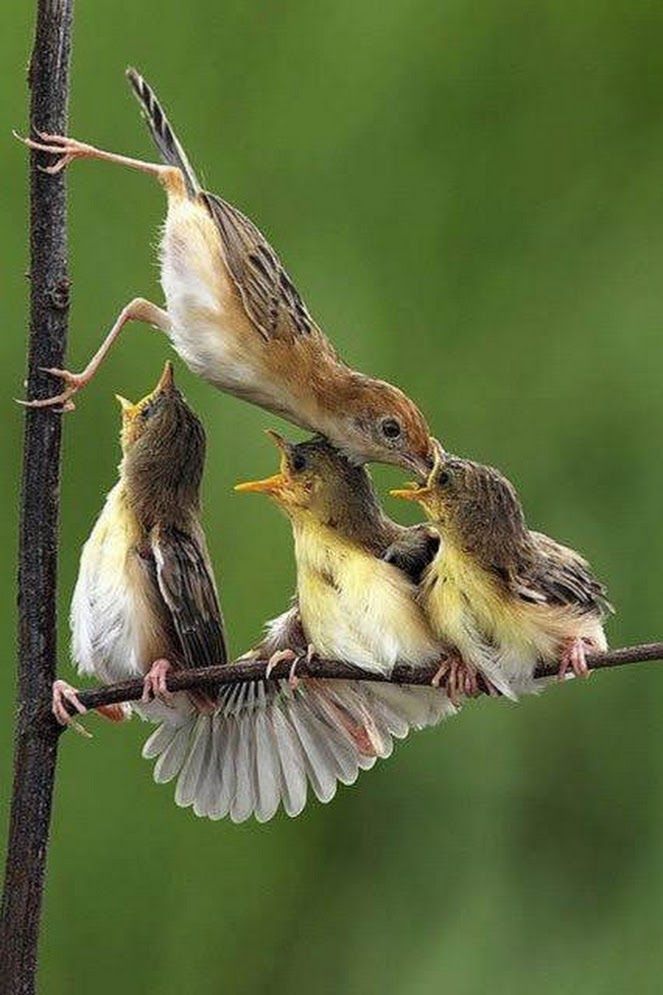 So, it is tough to be sure entirely about birds.
So, it is tough to be sure entirely about birds.
Indeed, the mother bird has enough memory to know which one has immediately got food or even, which has not got the food for a while.
Besides, the one which is hungrier screech louder, and the mother usually put the food into the loudest screecher’s mouth.
Again, mother birds observe their babies well. The one which is swallowing silently, putting the food in the gullet, doesn’t get food in that particular time.
Most Mother Birds Provide Protein-Laden FoodEvery mother bird usually feeds their babies many different things depending on their species.
Some perching birds like sparrows and finches eat seeds, nuts, and berries. But they feed their young babies insects because young birds need more protein than are found in the adult’s diet.
Songbirds often feed their babies almost 4 to 12 times an hour. They mostly provide the baby birds protein-laden insects and worms to make sure that they will be healthy.
Some parent birds that usually eat seeds, such as finches, cardinals, and sparrows, switch to insects during the breeding season.
Generally, the mothers eat the smaller insects themselves and take the larger ones back to the nest for the babies. So, they can carry more food to their ever-hungry offsprings.
Before feeding the babies, the parents hit the insect against the tree-branch or the ground. They kill the insect and soften the hard shell.
Sometimes, the parents chew the insect, and then break up the exoskeleton to make it edible for the baby birds.
Some Mother Birds Feed Substantial Milk to Their BabiesSome birds produce a substance similar to mammal milk. Pigeons are the best-known producers of crop milk, and both sexes produce it.
Crop milk produced by sloughing of special cells in the crop is very nutritious. Even pigeon milk has more fat and protein than that of cow or human.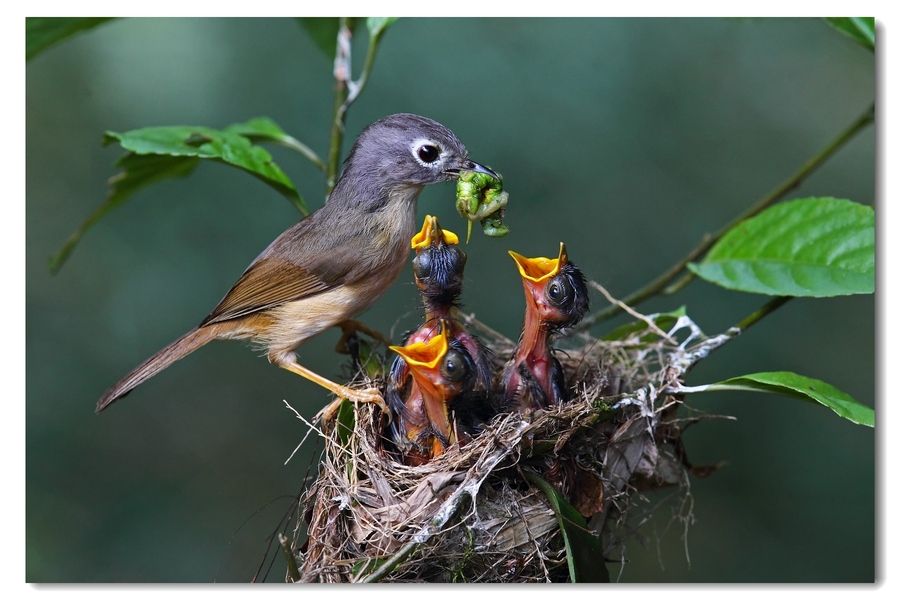
For the first few days after hatching, crop milk is the only food that the mother bird provides to the baby birds.
Both parents feed crop milk for a couple of weeks. As the babies get older, it gets seeds with the milk. When they are gradually getting older, they get more seed rather than less milk.
Some Mother Birds Feed Their Babies DifferentlySome parents, such as pigeons and doves, feed their babies by using different styles and techniques. They usually squeak and tap their beak against the baby birds’ beak to feed the food. The babies stick their beak down the parent’s throat and suck up to food of the crop.
Most of the songbirds do not have an actual crop, which is essentially a sack capable of holding a large amount of food. The baby birds which don’t have a crop can only hold a small amount of food at a time. They must be fed almost every 20 minutes from sunrise to sunset.
On the other hand, pigeons and doves can hold a large amount of food, which passes slowly through the digestive system.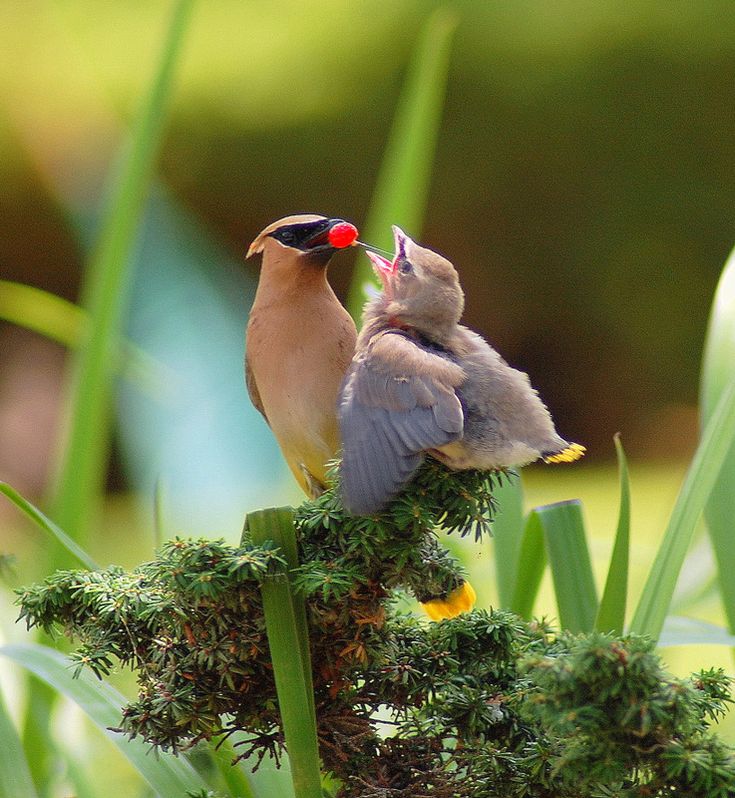 Even the youngest baby pigeon or dove can be fed no more than every couple of hours.
Even the youngest baby pigeon or dove can be fed no more than every couple of hours.
Most birds sleep and rest at night. But, some birds specialize at the nocturnal activities. Nocturnal birds are in the minority, but there are plenty of genus and species of nocturnal birds.
For example, most owls hunt at night and are inactive during the day. Also, nighthawks kill insects in flight at night.
Besides, some swifts kill airborne insects at night. Bitterns and night herons are nocturnal. But most night herons are not.
Final WordsHopefully, you are now well-known of the term “How do mother birds feed their babies?” As the baby birds entirely depend on their mother, they actually eat whatever their mother usually feeds.
When the baby birds are born, they are not able to eat food by themselves, so their mother, sometimes father, digests the food to make it safe for them.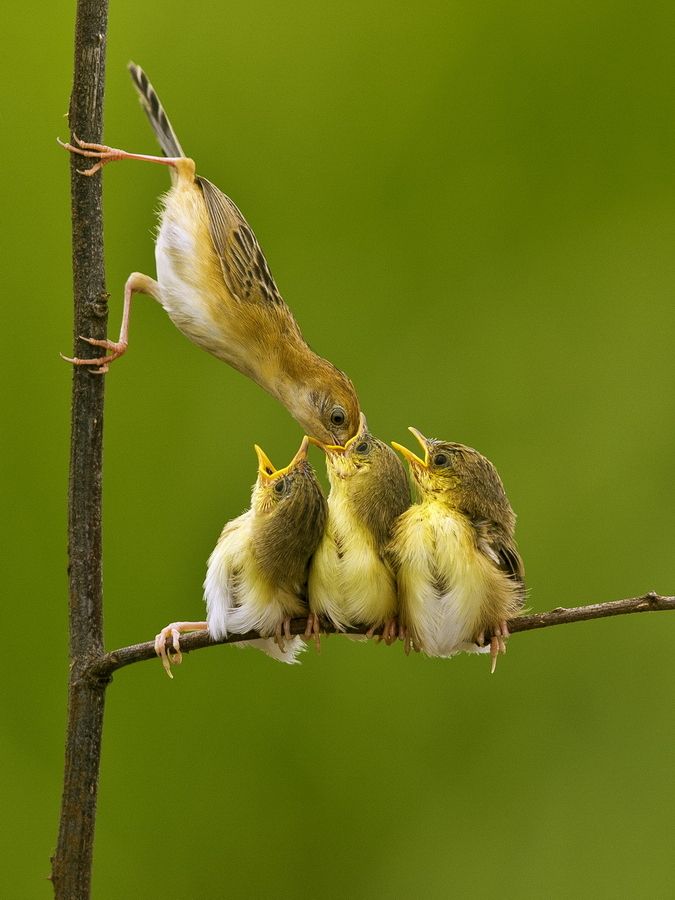 Then the parent puts the food into the mouths of its babies.
Then the parent puts the food into the mouths of its babies.
However, some birds have multiple eggs, but the only one who is the strongest and gets more food will survive each brood. Then, the particular bird will be the example of ‘survival of the fittest.’
How Do Mother Birds Feed Their Babies? [Comprehensive Guide]
5 shares
- Share
- Tweet
Do you ever wonder how do mother birds feed their babies? When you think about how a mother bird feeds her babies, you might picture her sitting on a nest and feeding them little worms.
But there’s more to it than that! In this blog post, we’ll explore the different ways that mother birds feed their young, from carrying food in their beaks to giving them regurgitated meals.
So read on to learn more about how baby birds eat!
Table of Contents
How Do Birds Feed Their Young?
One of the most fascinating things about birds is how they care for their young. Most birds feed their chicks by regurgitating food [1] that they have previously swallowed.
Most birds feed their chicks by regurgitating food [1] that they have previously swallowed.
The process begins when the adult bird swallows food and stores it in an enlargement of the esophagus known as the crop.
When it is time to feed the chicks, the crop muscles contract and push the food back up into the mouth. The bird then tilts its head back and transfers the food directly into the chick’s mouth.
This process allows chicks to get the nutrients they need without having to search for food on their own. In addition, it helps to bond parent and child, as they share a meal together.
As anyone who has ever tried to feed a baby knows, getting them to eat can be a challenge. It’s a good thing that birds have found such an efficient way to care for their young.
Also Read: What Birds Eat Black Oil Sunflower Seeds?
However, the method of feeding the birds varies from species to species. One thing in common is that hungry children open their mouths wide and scream.
Moreover, when a baby bird gets more food and another bird gets less food, the baby that gets less food starts screaming more than before.
The wider the baby bird’s mouth, the more convenient it will be for the mother bird to feed. In this way, the mother bird can feed a large variety of food to the babies.
How Does the Mother Bird Ensure all the Babies Get Enough Food?
Ensuring that all chicks get enough food can be a real challenge for mother birds. After all, they can’t very well stand in line and take turns at the feeding station.
Instead, they have to find other ways to ensure that each chick gets its fair share. One common strategy is for the mother bird to divide her food into smaller pieces and feed each chick one piece at a time.
This way, each chick gets an equal amount of food and no one is left out. Another approach is for the mother bird to feed the largest chicks first and then follow up with the smaller ones.
This ensures that everyone gets some food, even if it’s not an equal amount.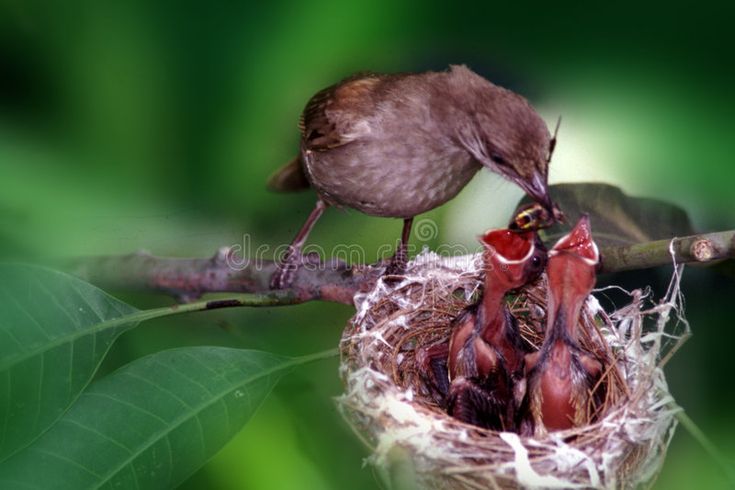 Either way, it’s clear that mother birds go to great lengths to make sure their chicks are well-fed.
Either way, it’s clear that mother birds go to great lengths to make sure their chicks are well-fed.
Moreover, the louder the chick cries, the more the mother thinks the bird needs more food. Then the mother bird feeds the young one.
CHECK: How Long for Bird Eggs to Hatch?
What Types of Food Do Mother Birds Feed their Babies?
All mother birds need to feed their babies, but the type of food they give them can vary depending on the species.
Some common examples of baby bird food include insects, worms, and small pieces of fruit or berries. While these may not sound appetizing to us, they are perfect for growing baby birds.
Insects are a good source of protein, which helps them to grow strong muscles and feathers. Worms are packed with nutrients that help keep baby birds healthy.
And fruit or berries provide them with the energy they need to fly and explore their world. So the next time you see a mother bird feeding her babies, take a moment to appreciate the variety of food she is able to provide.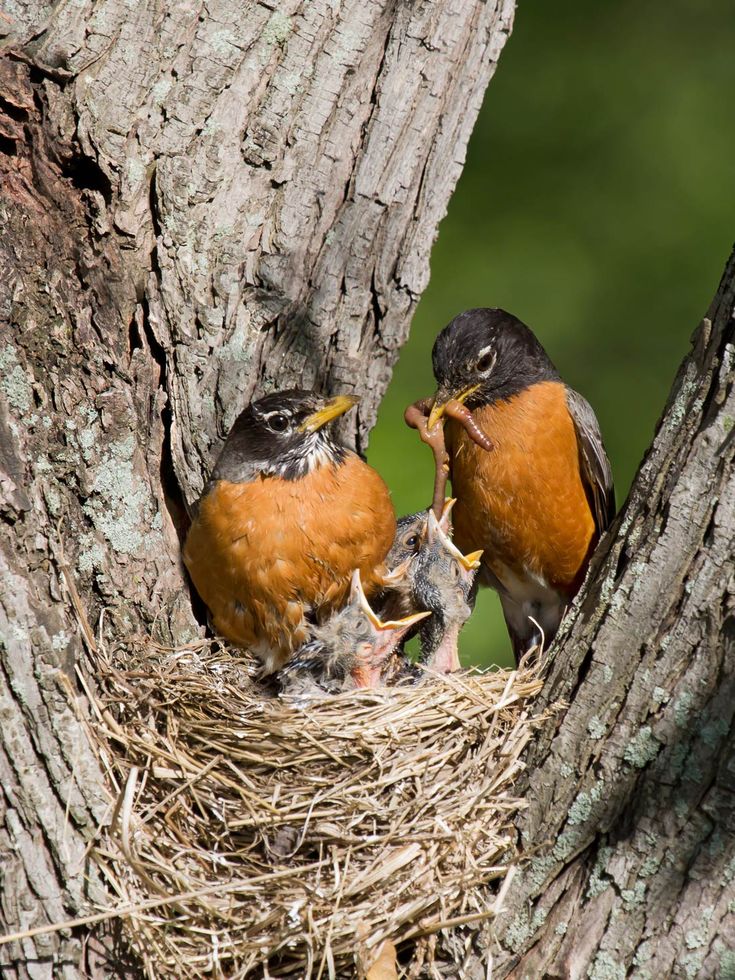
When Do Baby Birds Stop Being Fed by Mom?
The answer varies depending on the species of bird, but most young birds will begin to explore outside the nest and eat on their own between 4 and 6 weeks of age.
During this time, they will still beg for food from their parents, but they will also start to take small bites of solid food.
As they learn to fly and hunt, they will gradually become more independent, until they are finally able to fend for themselves entirely.
So the next time you see a baby bird at your birdfeeder, don’t be surprised if its mother is not far away.
What Are Some of the Other Ways Birds Feed Their Babies?
Birds are known for their unique parenting skills. They have many different ways of feeding their babies, and it’s important to know what they do so you don’t interfere with them.
Birds have a variety of foods they eat, including insects, seeds, nectar, and fruits. Some birds even eat meat! Birds also have different kinds of mouths depending on what kinds of food they like to eat.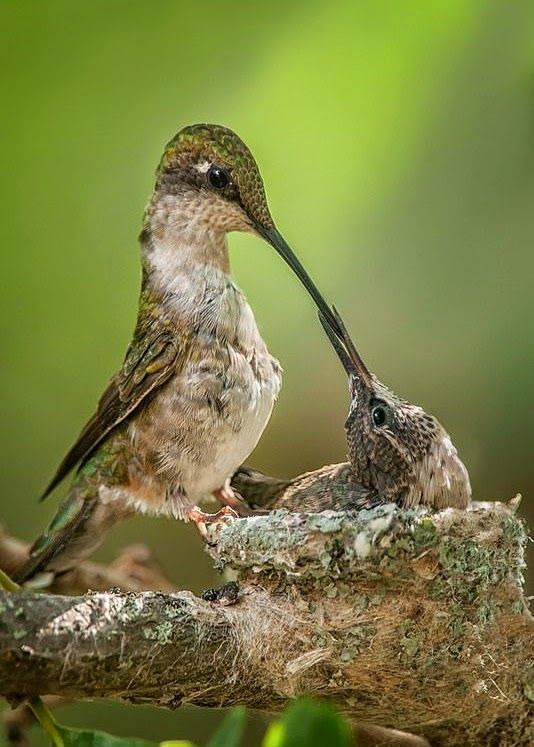
For example, hummingbirds have long beaks for eating nectar from flowers, while hawks have sharp beaks for tearing apart their prey.
Here are some other ways birds feed their babies:
Mothers will often regurgitate food for their babies. This means that they vomit up the food they ate earlier so that the baby can eat it again later.
Vomiting is a very normal process for humans and animals alike. It helps us get rid of things we shouldn’t digest such as bacteria or poisons and allows our bodies to re-use nutrients later on!
Some birds will also provide insects and worms for their chicks to eat directly from their own mouths! The parents will catch these bugs themselves or even give them to their babies as gifts!
Milk Sacs: Many birds have milk sacs that they use to feed their young after they hatch from eggs. They produce milk in these sacs so that when they hatch out of the egg, there’s already milk waiting for them!
Are There Mother Birds that Feed Young One’s Milk?
The answer is yes! There are a few mother birds that will actually produce milk for their chicks.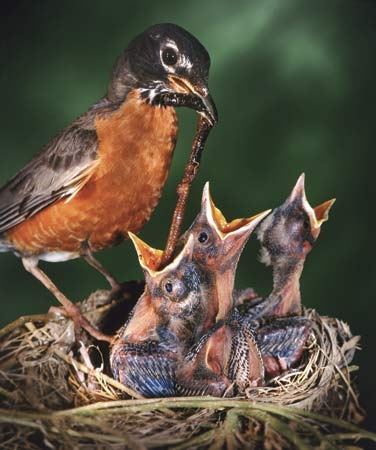 The most well-known example is probably the pigeons, who have a special crop that produces milk for their young [2].
The most well-known example is probably the pigeons, who have a special crop that produces milk for their young [2].
However, doves and some other species of birds also have this ability. The milk produced by these birds is very similar to mammal milk and is full of nutrients that help the chicks grow strong and healthy.
So next time you see a mother bird feeding her chicks, you can be sure that she’s giving them the best possible nourishment.
Have a look at this video.
Some Birds Feed Their Young at Night
Most species of birds rest and sleep at night. However, there are a few species that rest during the day and collect food at night.
Nocturnal birds [3] include owls and bats. They hunt at night and sleep during the day. Insects are one of their food, so they hunt insects at night.
They hunt at night and sleep during the day. Insects are one of their food, so they hunt insects at night.
Like other birds, they prey on insects, chew, soften and feed their young. In this way, the child can eat the food well.
Conclusion
So, there you have it! That’s how mother birds feed their babies. It can be a lot of work for them, but it is definitely worth it to see their little ones grow up and thrive.
Have you ever seen this process firsthand? We’d love to hear about it in the comments section below!
Resources
- 1. Researchers Find Out How Pigeons Make the “Milk” They Barf Into the Mouths of Their Young. Discover Magazine. Accessed June 2, 2022. https://www.discovermagazine.com/planet-earth/researchers-find-out-how-pigeons-make-the-milk-they-barf-into-the-mouths-of-their-young
- 2. Malm K, Jensen P. Regurgitation as a weaning strategy — a selective review on an old subject in a new light.
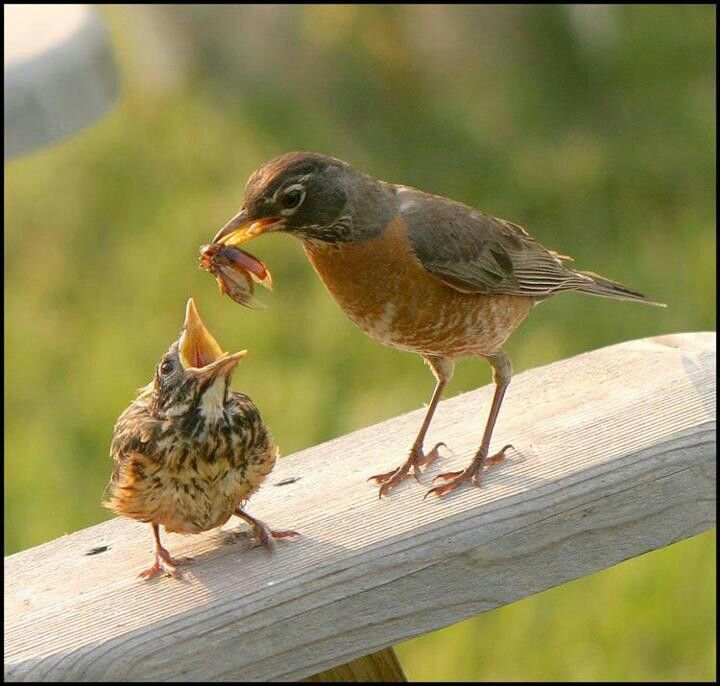 Applied Animal Behaviour Science. 1993;36(1):47-64. doi:10.1016/0168-1591(93)90098-A
Applied Animal Behaviour Science. 1993;36(1):47-64. doi:10.1016/0168-1591(93)90098-A - 3. Yahya MS, Puan CL, Azhar B, Atikah SN, Ghazali A. Nocturnal bird composition in relation to habitat heterogeneity in small scale oil palm agriculture in Malaysia. Agriculture, Ecosystems & Environment. 2016;233:140-146. doi:10.1016/j.agee.2016.09.003
Alina Hartley
Alina Hartley is a small-town girl with a ginormous love of bearded dragons. It all started with Winchester, a baby bearded who was abandoned at the shelter by his former owners because of a birth defect that caused one front leg to be shorter than the other. Alina originally went to the shelter looking for a guinea pig, but one look at Winchester and it was love at first sight. From that day on, Alina has dedicated her life to learning everything she can about bearded dragons. She loves helping new beardie parents start their incredible journey with these magnificent reptiles.
Follow her on:
LINKEDIN
TWITTER.
Read her latest articles HERE
Learn more about her HERE.
Birds feeding chicks
Birds skillfully catch big succulent insects in order to feed their cubs. This compilation captures caring parents feeding their little chicks. The photos are very touching and beautiful. Just imagine how much work this garden warbler in the photo below needs to feed 5 hungry mouths :)
And this robin is easier, she has only one chick, the rest apparently fell out of the nest, as often happens. She has already managed to find a great treat for him in the form of a fat caterpillar
Another caring mother who caught an insect similar to a cricket for her chicks
And this bird caught a worm and decided to feed all her cubs with it. Everyone got a piece of the delicacy
The most beautiful picture of a sunbird feeding offspring on the fly
Already quite an adult chick demands food from its mother :)
And this photo looks like a painting by some famous artist, the feeding process turned out to be very picturesque
And these baby swallows look not only hungry, but also aggressive - perhaps the parents hunted too long .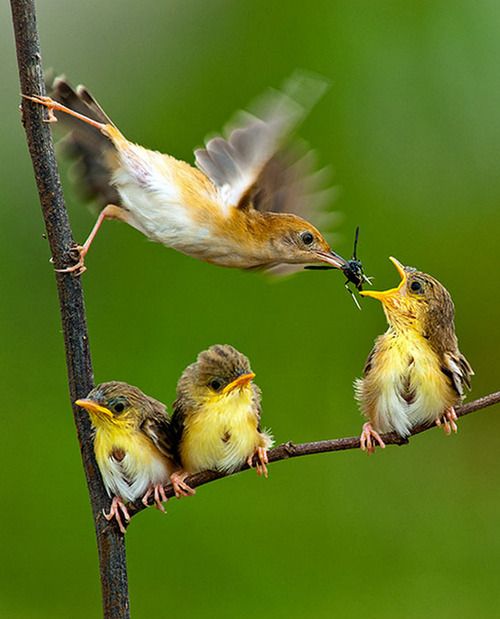 ..
..
A mother flamingo takes special care of her chick, checking to see if food has gotten into her pet's beak. Reminds me of spoon-feeding :)
This heron has almost nursed her offspring, very soon they will go on their first flight
This bird looks like a hummingbird, but in fact it is a hook-billed thymelia and another skillful shot of feeding on the fly. Everything happens in a fraction of a second, and the photographer managed to capture this moment.0003
And here's a funny photo I decided to leave to complete the selection - a warbler feeds a chick, which has long outgrown the size of its parent's nest. In fact, this is a cuckoo chick that just threw it into the nest of a strange bird
December 27, 2011 | Categories: Nature, Photo, Other
Rate the article by sharing with friends
Or using the button:
Liked or disliked
Rating: +6 Article author: Bergman Hits: 34537
More in the section:
How chicks are fed - Notes of a Naturalist
Series of books "First Acquaintance with Nature", 1902
Author: N.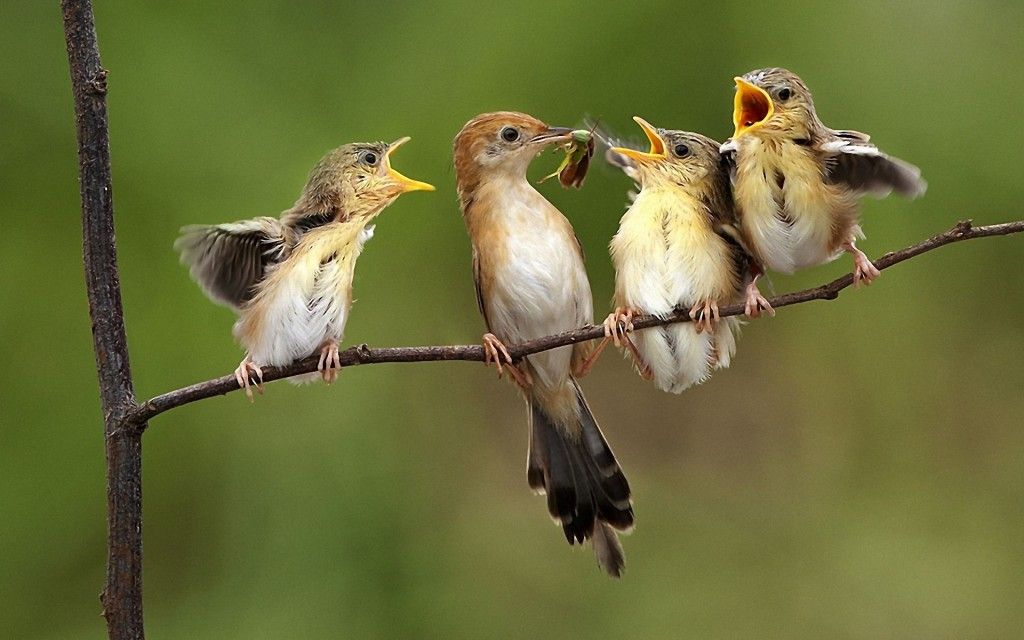 V. Lviv
V. Lviv
Watching the nests, notice which birds have naked chicks, which are covered with fluff, which birds have blind chicks, which have sighted ones?
At the water hen, chicks hatch from eggs, covered with thick down, and immediately begin to swim with their mother.
Kingfisher chicks hatch naked, helpless. They cannot leave the nest until they grow feathers, and all this time the mother feeds them with fish and aquatic insects.
If you manage to find an owl's nest with young owlets in an old hollow, you will see that the owlets hatch completely blind and helpless, but covered with down. The mother brings them insects and mice and feeds them until they grow up and fly out to prey themselves.
You can see for yourself how much work it takes for old birds to feed their children. Chicks grow very fast and therefore require a lot of food.
Watch the nests of starlings when young starlings have hatched there, and you will see that parents constantly fly into the nest with worms and caterpillars in their beaks and, having divided the food for their chicks, immediately fly back for new food. They say that sometimes they get so tired of flying for food that they fall to the ground in exhaustion and lie for some time with their mouths open.
They say that sometimes they get so tired of flying for food that they fall to the ground in exhaustion and lie for some time with their mouths open.
Thrushes bring worms and snails to their chicks, which they tear apart, giving a piece to each chick.
You can also see chicks in swallow nests. The chicks hatch from their eggs naked, blind, helpless, with a large ugly head and a wide mouth. Parents constantly fly and fly, bringing their children food - mosquitoes and small midges. The chicks grow quickly, and in three weeks you will see in the nest, instead of ugly chicks, beautiful young swallows covered with feathers, which may already be flying out of the nest. You can imagine how many mosquitoes and small midges you need to catch per day in order to feed five or six cubs so soon.
Once we found a nest of Chiffchaff on the ground under a bush. This is a small, very lively bird. Its back and wings are dark olive in color, and its chest is yellowish white.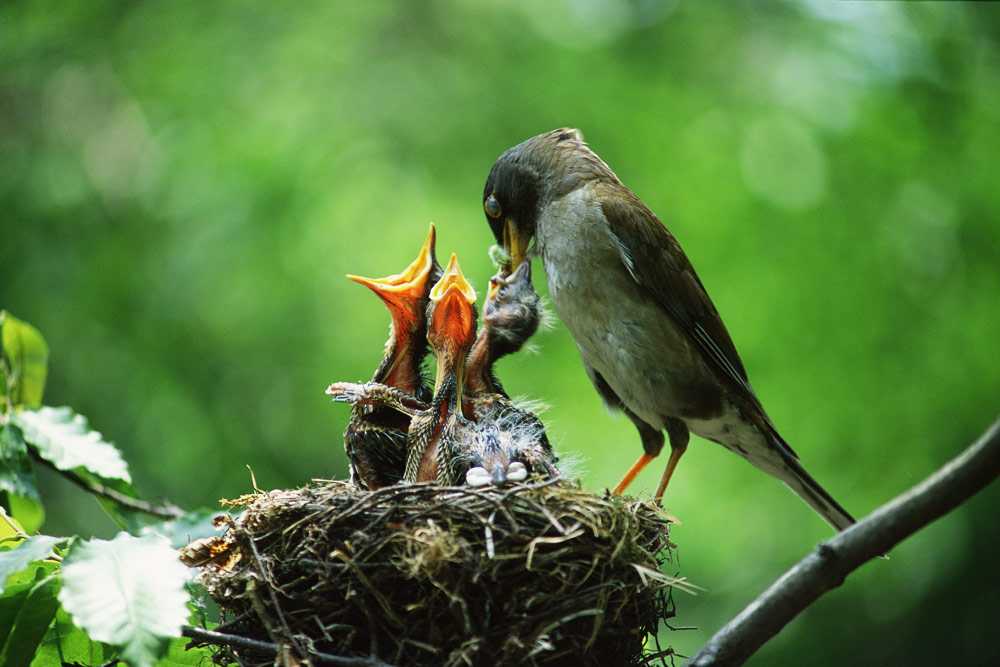 The mother brought several small caterpillars or flies every five minutes and put them in turn into the open mouths of her chicks. The male did not help her feed the children, he flew from one branch to another all the time and very clearly shouted: “chif-chaf, chief-chaf”.
The mother brought several small caterpillars or flies every five minutes and put them in turn into the open mouths of her chicks. The male did not help her feed the children, he flew from one branch to another all the time and very clearly shouted: “chif-chaf, chief-chaf”.
We wanted to help the little bird, so we collected some green caterpillars, and when the mother flew off to get food, we put them on the edge of the nest, and we ourselves sat down not far behind a tree and began to watch what would happen.
Mother flew back and forth several times, but we sat quietly and tried not to move so as not to frighten her. Finally, she began to pick up the laid caterpillars and give them to her chicks, sticking a piece into each gaping mouth. And then she flew off again for food.
This little bird worked all day and rested for no more than half an hour. She not only brought food to her children, but also cleaned the nest, throwing out bits of manure and rubbish from there.





